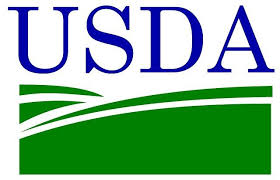USDA Invites Ag Producers to Respond Online to the 2022 Census of Agriculture
By Jodi Halvorson, USDA
Today, the U.S. Department of Agriculture (USDA) mailed survey codes to all known agriculture producers across the 50 states with an invitation to respond online to the 2022 Census of Agriculture at agcounts.usda.gov. The ag census is the nation’s only comprehensive and impartial agriculture data for every state, county, and territory. By completing the survey, producers across the nation can tell their story and help generate impactful opportunities that better serve them and future generations of producers.
The 2022 Census of Agriculture will be mailed in phases, with paper questionnaires following in December. Producers need only respond once, whether securely online or by mail. The online option offers timesaving features ideal for busy producers. All responses are due Feb. 6, 2023. Farm operations of all sizes, urban and rural, which produced and sold, or normally would have sold, $1,000 or more of agricultural products in 2022, are included in the ag census.
“The 2022 Census of Agriculture is a powerful voice for American agriculture. The information gathered through the ag census influences policy decisions that will have a tremendous impact on ag producers and their communities for years to come,” said Agriculture Secretary Tom Vilsack. “I strongly encourage all farmers, no matter how large or small their operation, to promptly complete and return their ag census. This is your opportunity to share your voice, uplift the value and showcase the uniqueness of American agriculture.”
Collected in service to American agriculture since 1840 and now conducted every five years by USDA’s National Agricultural Statistics Service (NASS), the Census of Agriculture is a complete picture of American agriculture today. It highlights land use and ownership, producer characteristics, production practices, income and expenditures, among other topics.
“Our farmers and ranchers have an incredible impact on our nation and the world. I want to thank them in advance for responding to the ag census,” said NASS Administrator Hubert Hamer. “We recognize how valuable their time is, so we have made responding more convenient and modern than ever before.”
Between ag census years, NASS considers revisions to the questionnaire to document changes and emerging trends in the industry. Changes to the 2022 questionnaire include new questions about the use of precision agriculture, hemp production, hair sheep and updates to internet access questions.
Responding to the Census of Agriculture is required by law under Title 7 USC 2204(g) Public Law 105-113. The same law requires NASS to keep all information confidential, to use the data only for statistical purposes, and only publish in aggregate form to prevent disclosing the identity of any individual producer or farm operation. NASS will release the results of the ag census in early 2024.
To learn more about the Census of Agriculture, visit nass.usda.gov/AgCensus. On the website, producers and other data users can access frequently asked questions, past ag census data, special study information, and more. For highlights of these and the latest information, follow USDA NASS on twitter @usda_nass.















